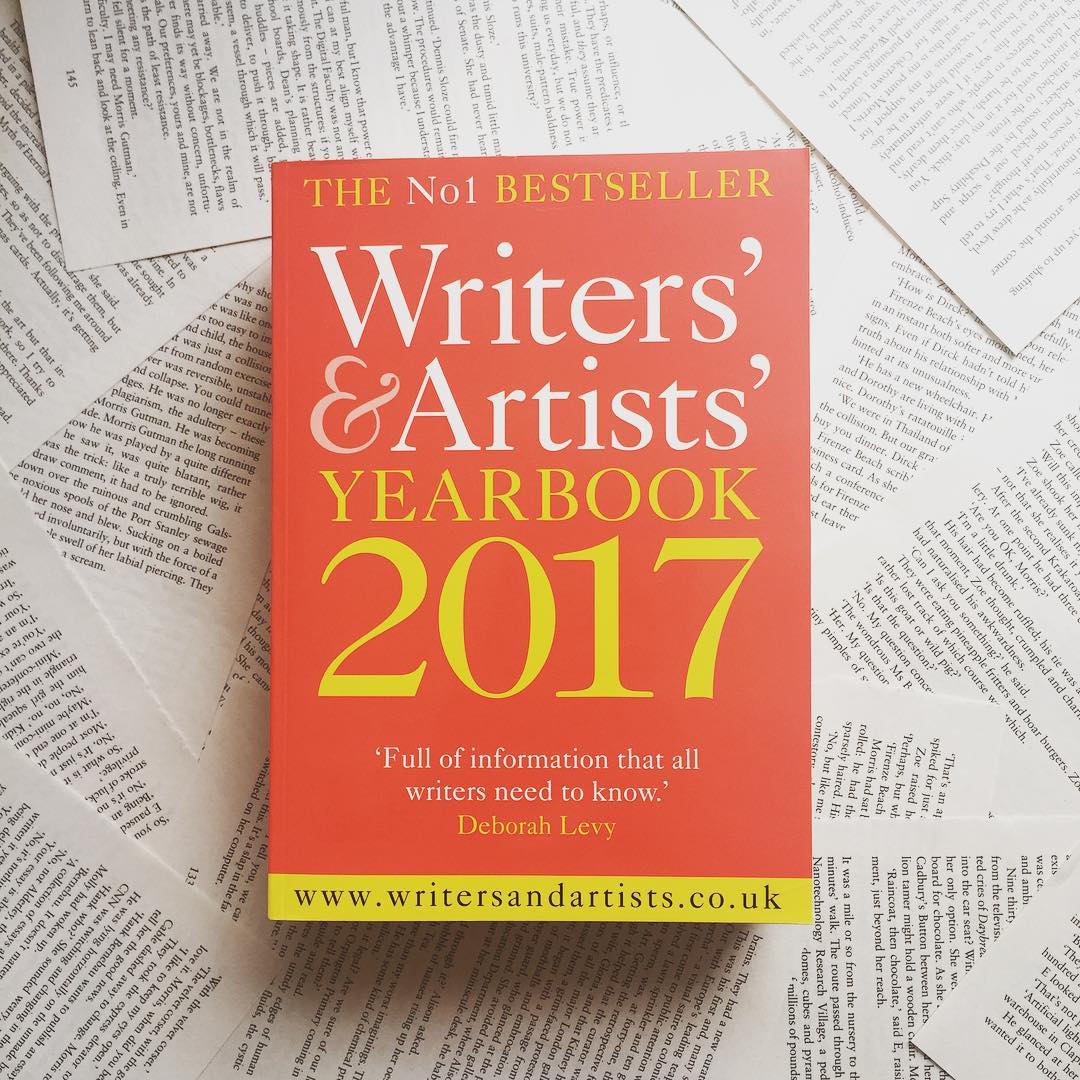Between the months of January and April every year, I live and breathe all things Writers & Artists (and in reality at other times too), but for the first half of every year I’m deeply immersed in ‘creating’ the new editions of both Yearbooks. It’s an intense and fast-paced process and involves a collective of editorial, design, technical and production know-how and co-operation. We’ve got it down to function as a (fairly!) well-oiled machine, and (unless the wheels fall off at any stage), it pans out something like this.

Discussion
In fact before the start of the year, I gather the three listings editors and the articles editor of both Yearbooks together over a publisher’s lunch (an essential kick-off to each new edition), to talk through the trends and the ups and downs of the publishing world since the previous edition was published (they appear every July) and how these will affect the layout, content and editorial judgments we make for the next one. We discuss everything from copy-editing minutiae such as how to consistently present twitter addresses or who to contact to check and update our tables of BSI proof-correction marks (the SfEP, in case you're wondering), to broader issues such as what new topics we should include (updates for example on the rise and success of novels by teen bloggers and more generally on sales of children’s books).
Commissioning
We invite every contact included in the Yearbook – all 4,500 plus of them – to update their existing entry in a mass mailing, which sees thousands of emailed entries drop in and out of the listings editors’ inboxes. Hundreds of new entries are created and added to each edition. There follows a couple of months of sending and chasing, checking and updating, editing and styling of contact entries into the W&A database, where all content is stored and tagged ready for output into the Yearbook page design later in the process.
Simultaneously, I contact the authors of all existing articles, decide which articles should be retired, either to the advice section of www.writersandartists.co.uk or completely, and, the best part of my job, I get to contact those writers and professional who I think readers of the Yearbook would most like to hear from. In short, I commission pieces from the writers I most admire and who are great exponents of their particular creative art: a crime writer, self-published author, poetry publisher, literary agent, whoever they might be. I also invite a successful author to pen the forthcoming year’s Foreword.
Editing and design
All listings and all articles are copy-edited and in the case of articles, may be structurally edited too and suggestions made to their authors as to what sub-headings or other features might be added. The complete text is reviewed for extent – will it fit into the allocated 816 pages? Will all new content fit our established design and layout? What changes need to be made to the contents pages or order of content? The editors check layout and design as they edit so that by the time all articles are in and all entries edited and double-checked for sense, style and relevance, by mid-April we know the book’s final extent. Our production department then orders paper and books a printer after a sales meeting when the print run and price is set for another year (based on an informed assessment of the market and sales of previous editions).
Proofing and indexing
More checking at proof stages takes place: are there spelling or layout errors that have slipped through? Are widows or orphans left dangling? (See the box on page 645 of the Writers' & Artists' Yearbook 2017 for an explanation.) The index is automatically generated from the W&A database and the complete text is sent electronically to a typesetter, who fine tunes the pages, adds page numbers and running-heads and prepares the final PDFs ready for printing.
Printing and digitization
The Yearbook appears not only in print – although the vast majority of our readers still want a version that they can scribble on, flip through manually and have displayed on their shelves – it comes as an ebook, and all listing contacts are available through a subscription-only section of our website. I make sure, with the production team, that all content is fit for whatever platform it is published on.
Publicising and selling
You could say that putting the Yearbook together is the easy part. How to let readers know that it exists, promoting it so that tens of thousands of individuals are happy to part with money to invest in the very latest edition is always a challenge. This is what really defines the ‘publishing’ part of what we do: making something available for public consumption. A whole troop of publicists, marketeers and sales executives are behind the delivery of any book and the Writers' & Artists' Yearbook is no exception. Take a look at our successful Twitter publicity campaign using the hashtag #istartedhere, or our annual Short Story competition that ties-in with publication or events that are tied-in with the W&A brand. Reviews come in, interviews are had, festival talks are booked and the Yearbook takes centre stage once again in July each year as ‘the writers’ Bible’ (Susan Hill).
Phew! We made it for another year. Time for some quick reflection and another publisher’s lunch, before taking up my copy of the latest edition of the Bookseller and turning my attention to the 111th edition.
The above serves well as an illustration of the essential stages in the evolution of any book. As the Editor, I’m like the spider at the centre of an intricate web of activities, all inextricably linked. I keep a beady eye on all aspects of the process, working with colleagues at Bloomsbury and those scattered further afield as they work freelance to create, collate, cajole and capture content.
Comments